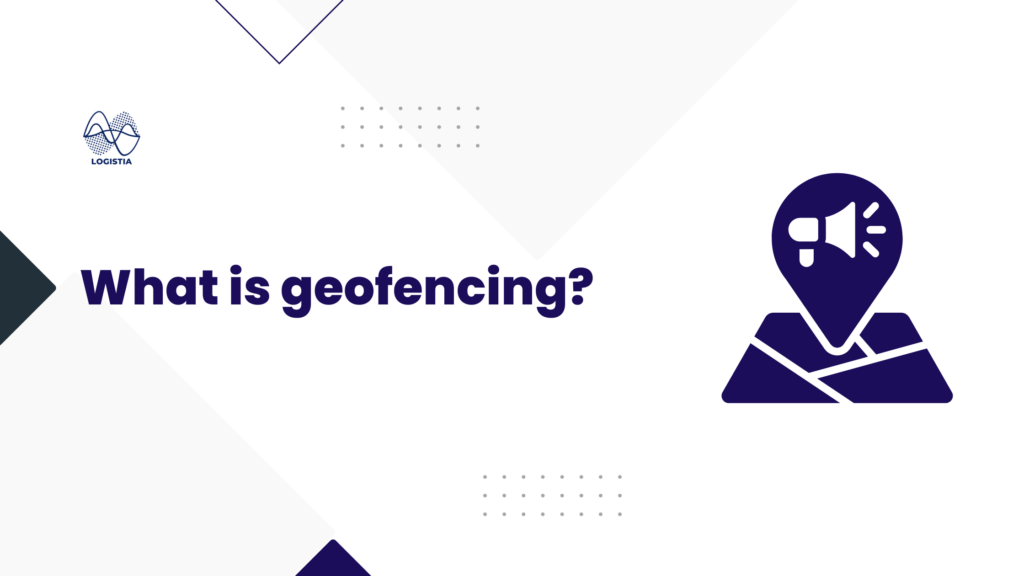What is geofencing and why it’s useful?
Geofencing is becoming a vital tool in logistics and delivery services. This technology creates virtual boundaries around a specific area, leveraging technologies like GPS or RFID to monitor and manage movements within these zones. As businesses strive for greater efficiency and customer satisfaction, integrating geofencing into delivery routines can offer significant advantages.

But what is geofencing anyway?
Geofencing is a location-based service that uses GPS, RFID, Wi-Fi, or cellular data to create a virtual geographic boundary around a specific area. Once this boundary is established, the system can trigger a pre-programmed action when a device enters or exits the designated area. This can include sending alerts, tracking vehicle movements, or automating certain processes.
How geofencing works
Geofencing technology relies on software that integrates with location-tracking devices. When a device, such as a smartphone or GPS unit, enters or leaves the predefined boundary, the software performs a programmed action. This could be an alert to a dispatcher, an update to a delivery status, or a trigger for other automated functions. The virtual boundaries can be set to cover various sizes and shapes, tailored to specific business needs.
Applications in delivery operations
In delivery operations, geofencing offers multiple applications. Businesses can use it to track when vehicles enter or leave designated zones, optimize delivery areas with data, send notifications to customers, and ensure timely deliveries. It also allows for updates to customers about their delivery status, enhancing customer satisfaction and operational efficiency. By implementing geofencing, businesses can streamline their delivery processes and improve overall service quality.
What are the benefits of having geofencing?
More efficient operations
Geofencing significantly improves operational efficiency with automation. For instance, it can automatically log the arrival and departure times of vehicles at specific locations, eliminating the need for manual entry. This automation reduces human error and saves time, allowing delivery teams to focus on more critical tasks. Moreover, geofencing can help optimize routes, ensuring that drivers take the most efficient paths to their destinations.
Happy customers
Implementing geofencing can greatly enhance the customer experience. Depending on the flow each business creates, customers can receive real-time notifications about the status of their deliveries, including precise estimates of arrival times. This level of transparency builds trust and satisfaction, as customers are kept informed about their deliveries’ progress. Additionally, geofencing allows for more accurate and timely deliveries, reducing the likelihood of missed or delayed deliveries and improving overall customer service.
Security and compliance
Geofencing provides an additional layer of security for delivery operations. By having virtual boundaries, businesses can monitor when vehicles enter or leave specific areas, reducing the risk of theft or unauthorized use. This feature is particularly useful for high-value or sensitive deliveries. Furthermore, geofencing helps ensure compliance with regulatory requirements by keeping accurate records of delivery routes and times, which can be crucial for audits and reporting purposes.
Cost savings
Through optimizing routes and reducing idle times, geofencing can lead to significant cost savings. Efficient route planning minimizes fuel consumption and reduces wear and tear on vehicles, which leads to lower maintenance costs. Plus, the automation of tracking and logging processes reduces the need for administrative labor, further cutting operational expenses. These savings can have a substantial impact on a company’s bottom line, making geofencing a cost-effective solution for improving delivery operations.
Geofencing and Logistia Route Planner
Implementing geofencing in your delivery operations is straightforward and highly effective when using Logistia Route Planner. Here’s how Logistia helps you:
- Virtual boundaries: With Logistia Route Planner, you can easily have geofences around delivery locations such as customer addresses. These geofences can be tailored to suit your delivery zones, ensuring precise monitoring and management.
- Integration with delivery management: Logistia Route Planner integrates geofencing data with your overall delivery management system. This means that whenever a delivery vehicle enters or exits a geofenced area, the system automatically logs the event. This real-time tracking allows for better coordination and quick responses to any deviations or delays.
- Enhanced customer experience: By implementing this feature through Logistia Route Planner, businesses can provide their customers with accurate and timely delivery updates. Customers receive notifications when their delivery is approaching, enhancing their experience and satisfaction.
- Data and analytics: Logistia Route Planner offers robust reporting and analytics features. You can analyze geofence data to identify patterns, optimize delivery routes, and make informed decisions to improve overall efficiency. This data-driven approach helps in continuously refining the delivery process.
- Ease of use and support: Logistia Route Planner is designed with a user-friendly interface, making it easy for businesses of all sizes to implement geofencing. Additionally, the platform offers comprehensive support and resources to help you get the most out of its geofencing capabilities.
Incorporating geofencing into your delivery routine with Logistia Route Planner not only enhances efficiency but also ensures a higher level of service and customer satisfaction. By leveraging this advanced technology, you can streamline your operations, reduce costs, and stay ahead in the competitive delivery market.
Conclusion
Geofencing is a transformative technology for modern delivery operations. It helps businesses optimize routes, improve customer satisfaction, and enhance operational efficiency. By having virtual boundaries and integrating them with delivery management systems, companies can achieve real-time tracking and dynamic route adjustments. This results in smoother and more efficient deliveries, saving time and resources.